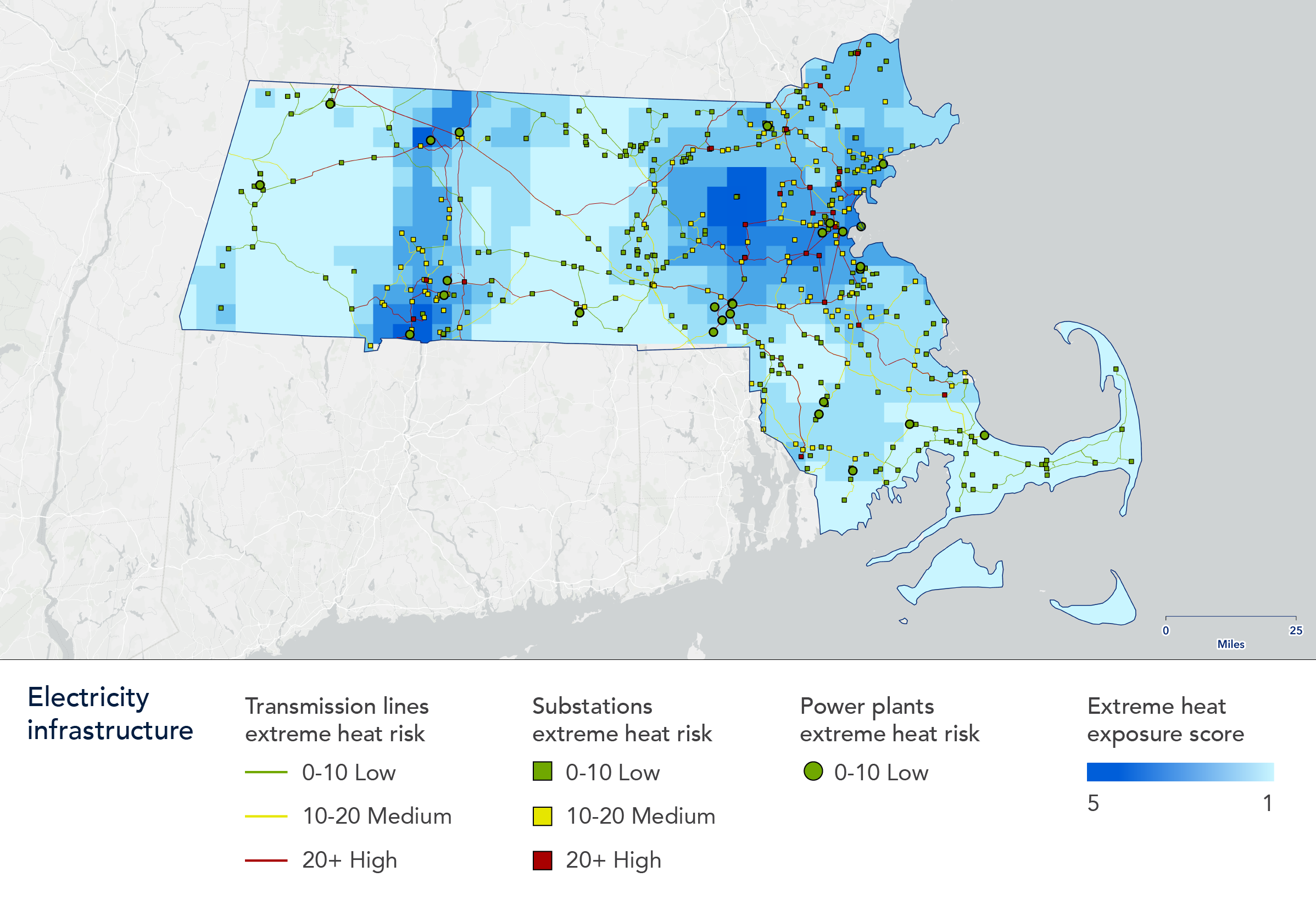
A blueprint for resilience: Massachusetts’ state energy security plan
We worked with the Bay State to develop a comprehensive vulnerability and risk assessment that highlighted unique risks that must be addressed to ensure a reliable, secure, and resilient supply of energy to its citizens into the future.
As energy systems face increasing threats from natural hazards, aging infrastructure, and evolving supply chains, state energy offices are seeking robust frameworks to assess vulnerabilities and prioritize mitigation. Massachusetts’ vulnerability and risk assessment offers a compelling blueprint that balances technical rigor, stakeholder engagement, and forward-looking risk analysis.
Challenge
Massachusetts faced a growing need to understand and mitigate risks to its energy infrastructure amid evolving natural hazards and system vulnerabilities. With electric, petroleum, and natural gas systems spanning diverse geographies, the state sought a comprehensive way to assess exposure to threats like coastal flooding, high winds, wildfires, and extreme temperatures. The challenge wasn’t just identifying threats, but understanding how different infrastructure components (e.g., above-ground transmission lines, underground pipelines, substations) would respond to these hazards and what consequences their failure might have on statewide energy supply.
Compounding the complexity was the need to coordinate across agencies and stakeholders, including the State Energy Office, Emergency Management, Public Utility Commission, investor-owned utilities, trade organizations, and ISO New England. Massachusetts needed a framework that could bring these voices together while delivering actionable insights—with a forward-looking scope out to 2050.
Solution
We partnered with Massachusetts to develop a forward-looking risk and vulnerability assessment that combined technical depth with collaborative governance. The solution is centered on a three-part risk scoring methodology:
- Exposure: Evaluate the severity and expected frequency of hazards such as coastal flooding, high winds, wildfires, and extreme temperatures through 2050 across infrastructure locations in Massachusetts.
- Vulnerability: Assess how susceptible each asset was to damage, distinguishing between above-ground components like transmission lines and more resilient underground systems.
- Consequence: Measure the criticality of each asset to the state’s energy supply, where, for example, losing an interstate pipeline would have far greater implications than a lateral line or receipt point.
Our team facilitated monthly meetings with both executive and project management, ensuring alignment and transparency throughout the process. On the electricity side, we leveraged ISO New England planning cases to conduct N-1 and N-1-1 analyses—simulating the impact of losing one or two assets during peak periods to evaluate consequences. For natural gas and petroleum, we analyzed throughput volumes to assign consequence scores.
To support decision-making, we compiled risk scores into an Excel-based inventory and integrated the data into a GIS platform hosted on the state’s Emergency Management servers. This allowed agencies to visualize risks geographically and prioritize mitigation efforts based on the risk assessment results.
Results
The project delivered:
- Unified risk scoring system within each of the three major energy sectors.
- Interactive geospatial view of infrastructure risks and vulnerabilities.
- Consolidated inventory of existing and proposed mitigation projects.
- Framework for prioritizing high-risk areas.
Massachusetts now has a clearer understanding of its energy vulnerabilities and a strategic path forward for reducing risk. The plan also planted seeds for collaboration across industry and state government entities allowing each other to learn from each other’s mitigation strategies.
While the final report is not publicly available, the methodology and structure of Massachusetts’ state energy security plan offer a replicable model for how other states can combine data, stakeholder input, and strategic foresight to safeguard their energy future.
Maps like this one, which highlights the risk of extreme heat exposure to electricity infrastructure, offer a powerful visual tool for understanding risk distribution across the state and serve as a foundation for developing targeted mitigation strategies.


Source: ICF